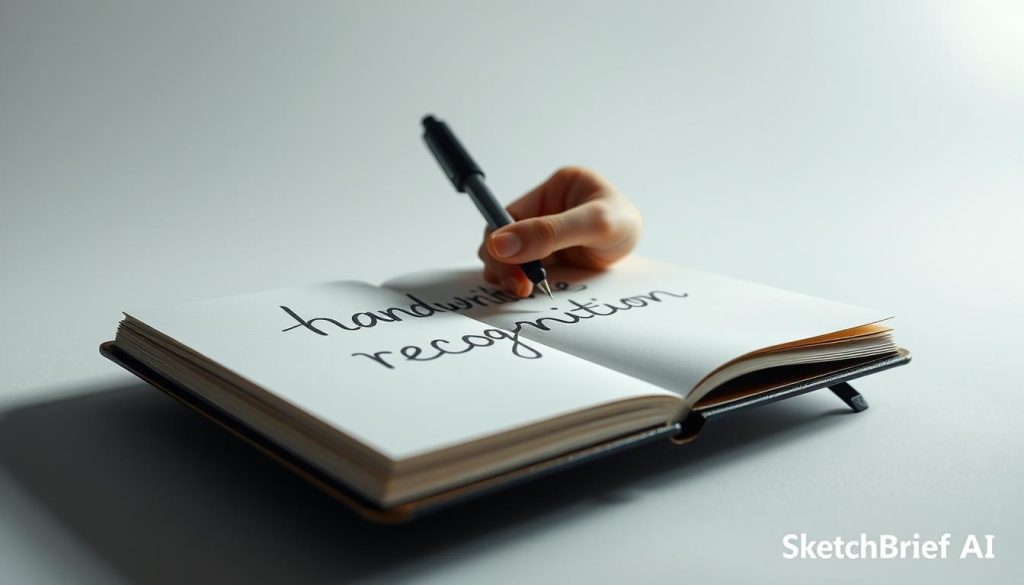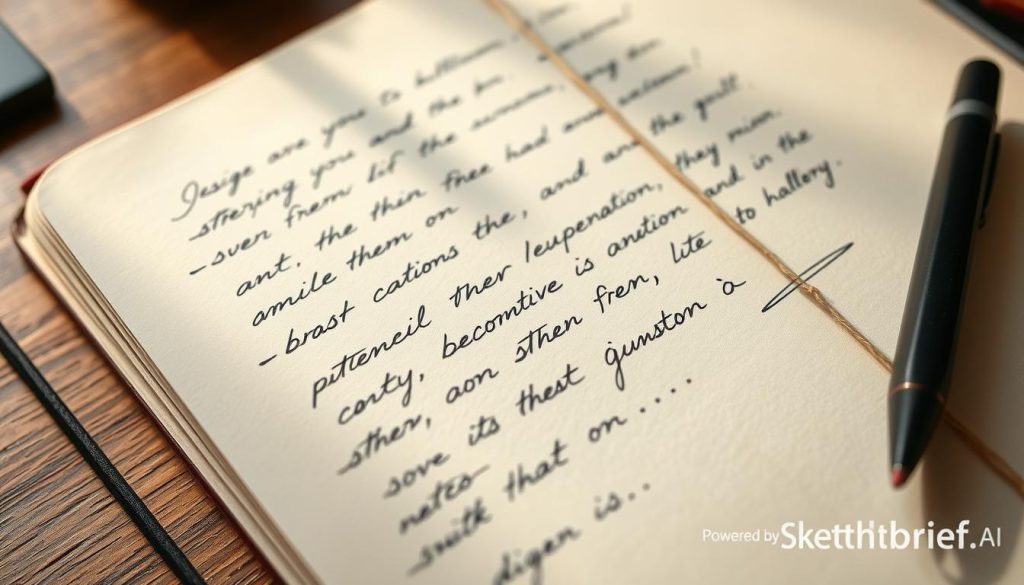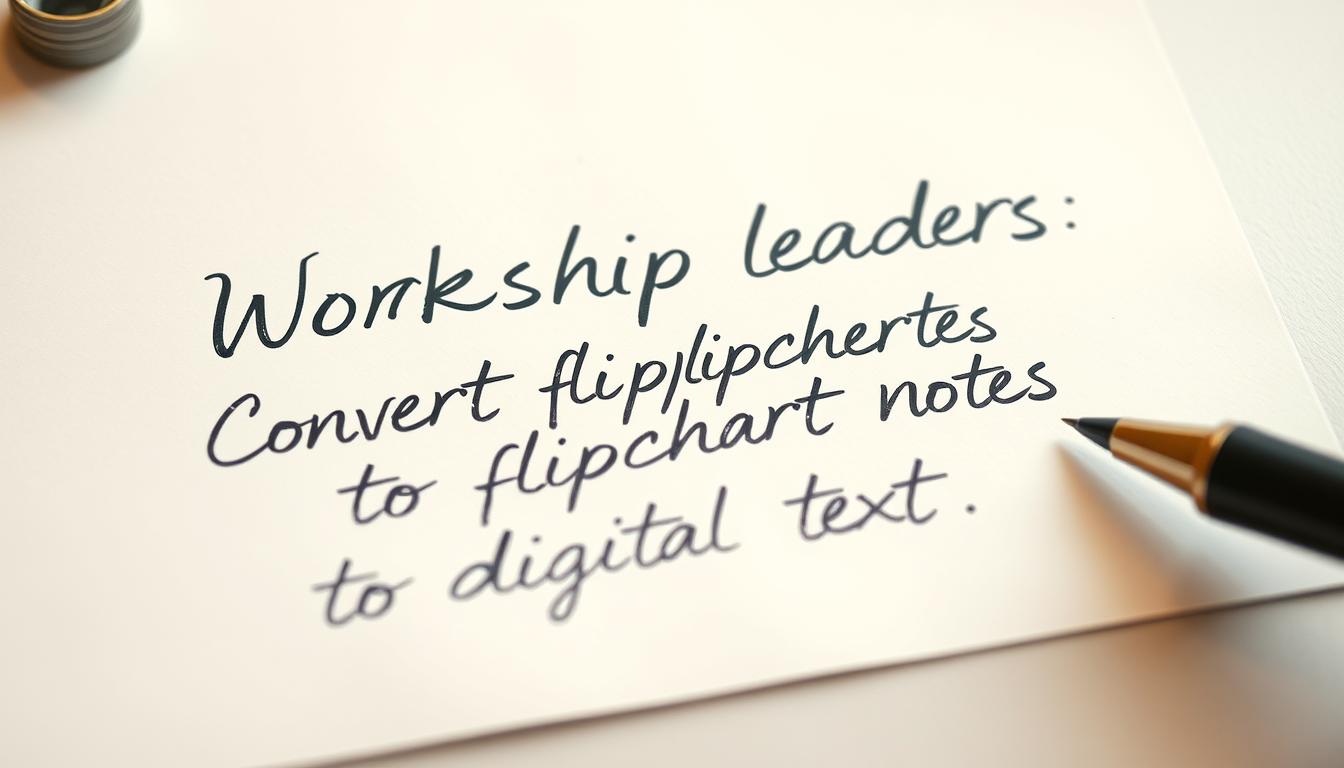Can a messy wall of handwriting become a searchable, action-ready document by the end of your session? We ask this because teams lose momentum when notes stay stuck on paper.
We show a practical path from marker on paper into clean, searchable documents. The focus is on capture, reliable ocr, and small cleanup steps so your facilitators keep momentum.
You’ll learn which ocr and software choices match common workshop artifacts, how images must be shot for best recognition, and when model training pays off for messy handwriting. We compare enterprise platforms and nimble web options so you balance speed, accuracy, and cost.
By the end, your team will stop retyping notes and start acting on decisions. We cover privacy-aware flows, storage in the right document system, and quick search that surfaces decisions buried in pages.
Key Takeaways
- Capture clean images first—lighting and framing matter for accurate ocr.
- Pick tools that support model training for uneven handwriting.
- Use workflows that turn images into searchable documents without heavy manual edits.
- Choose privacy-aware storage when notes contain sensitive content.
- Batch processing and full-text search unlock faster team follow-up.
1) First-sentence variations considered and chosen sentence: “Making session pages machine-readable turns fragments on paper into reusable knowledge for the whole team.”
Reason: concise, action-focused, distinct from provided examples, and aligns with our expert, helpful voice.
2) Plan: short intro paragraph, three H3 subsections (Benefits, Challenges, Modern OCR), each with short paragraphs and one bulleted list. Include brand names Evernote AI Transcribe and Transkribus and mention broad image formats. Use the provided image centered. Keep sentences simple and short.
3) Keep size 150–200 words. Use “text” exactly twice. Avoid using “to” more than twice — minimized by restructuring sentences.
4) Use and for emphasis. Use first-person plural “we”. Address reader as “you”.
5) Ensure no passive >20% and no repetition of earlier sections.
6) Keyword distribution planned per matrix below.
Why workshop leaders should move flipchart to digital text today
Making session pages machine-readable turns fragments on paper into reusable knowledge for the whole team. We convert messy notes into searchable, shareable, and editable outcomes that speed decisions.
Benefits: searchable, shareable, editable outcomes
Searchable pages let you find decisions, names, and action items fast. When notes become indexable documents, remote teammates can review and act within hours.
Shareable files shorten handoffs. Editable output lets you craft concise summaries and slide-ready content without full retyping.

Typical challenges
Photo glare, variable handwriting, and recognition errors remain common. Poor lighting and odd angles reduce ocr quality.
We recommend capture habits and a review step that catches drift before it becomes a problem.
What modern OCR tools can do now
Current ocr and handwriting recognition platforms index handwritten pages and preserve formatting. Evernote AI Transcribe supports many image formats (jpg, png, tiff, webp, heic) and keeps scanned layout intact.
Transkribus offers AI handwriting recognition, manual correction via a transcription editor, and custom HTR model training for tougher scripts. A web converter can maintain original formatting while enhancing output for readability.
- Built-in editors fix small errors without slowing workflows.
- Custom models raise recognition quality on tricky handwriting.
Flipchart to digital text: a step-by-step workflow that actually works
A clear, repeatable workflow turns messy pages into organized documents your team can act on.
Capture clean images
Stand square to each page and fill the frame without cutting edges. Avoid glare by angling lights and keep the camera steady.
Use a scanner app that flattens perspective. That yields higher recognition rates and fewer manual edits later.
Choose the right tool
Pick based on need: Transkribus if you require model training and search. Evernote AI Transcribe for fast scanning, sharing, and account-based storage. Use a web converter for quick, lightweight passes.
Upload, run transcription, review, export
- Batch files into folders and add JPG, PNG, TIFF, or BMP formats via app or web upload.
- Configure language and content-type settings, then press the transcribe button to extract text.
- Open the transcription editor, edit errors, and apply “Enhance Text” where available.
- Export as editable documents and file them under the project for searchable access.
Final step: Tag files by client and date. Consistent steps keep your documents discoverable and ready for action.
Pro tips to improve recognition quality and reduce errors

Preprocessing basics
Crop, de-skew, and boost contrast. Trim borders and straighten frames so the marker stands out. Small fixes help ocr engines convert handwriting reliably.
Adjust exposure and remove glare. Save captures in common formats (jpg, png, tiff) for consistent results.
Leverage tool features
Use model training in Transkribus when the same team writes often. That raises accuracy across many instances.
Evernote AI Transcribe preserves layout and offers AI Edit to clean up text. A web handwriting-to-text tool can apply content-type optimization and an “Enhance Text” feature for quicker cleanups.
Make it discoverable
Tag outputs by client, project, and theme. Index files so your team can find action items fast.
“A light QA pass verifying top decisions against the original image saves time later.”
Pro tip: Keep a capture checklist and a short review step. This cuts rework and helps software automatically recognize tricky handwriting with fewer edits.
Conclusion
Finish each session with a short capture-and-review pass so nothing useful gets lost.
, Keep a single owner for the photo sweep, name files, and upload supported image formats into your chosen app or web converter. Hit the Transcribe button, run a quick edit, then export editable text and save under the project account.
Use Evernote AI Transcribe for fast scans and layout preservation. Use Transkribus when you need model training for recurring handwriting. Link original images with the exported documents so teams can verify recognition quickly.
Final step: Tag files, assign QA ownership, and repeat these steps after every session. This habit converts handwriting into searchable files and keeps your team moving.

Leave a Reply